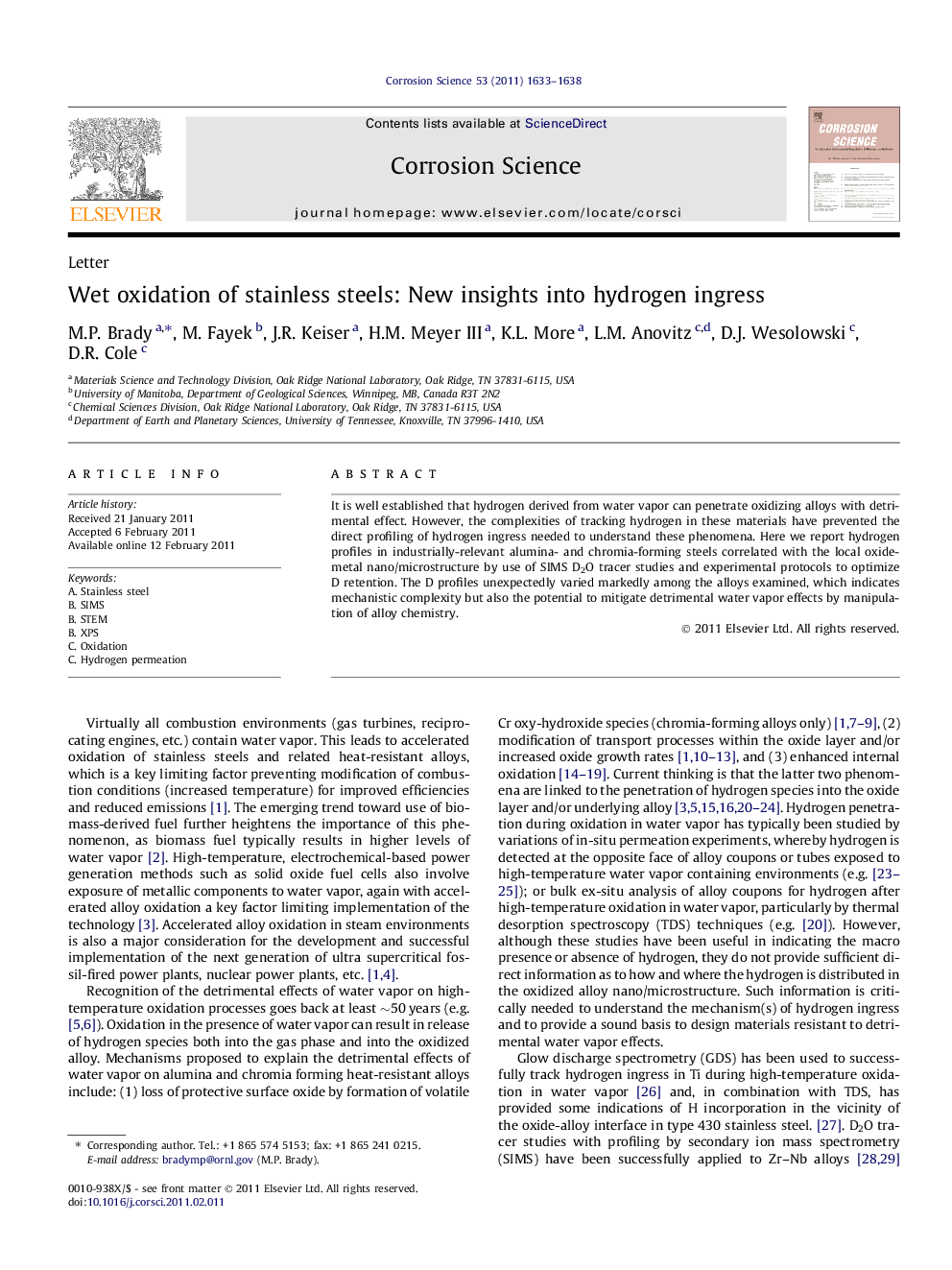| Article ID | Journal | Published Year | Pages | File Type |
|---|---|---|---|---|
| 1470328 | Corrosion Science | 2011 | 6 Pages |
Abstract
It is well established that hydrogen derived from water vapor can penetrate oxidizing alloys with detrimental effect. However, the complexities of tracking hydrogen in these materials have prevented the direct profiling of hydrogen ingress needed to understand these phenomena. Here we report hydrogen profiles in industrially-relevant alumina- and chromia-forming steels correlated with the local oxide-metal nano/microstructure by use of SIMS D2O tracer studies and experimental protocols to optimize D retention. The D profiles unexpectedly varied markedly among the alloys examined, which indicates mechanistic complexity but also the potential to mitigate detrimental water vapor effects by manipulation of alloy chemistry.
Related Topics
Physical Sciences and Engineering
Materials Science
Ceramics and Composites
Authors
M.P. Brady, M. Fayek, J.R. Keiser, H.M. Meyer III, K.L. More, L.M. Anovitz, D.J. Wesolowski, D.R. Cole,
